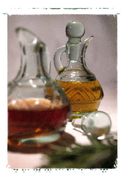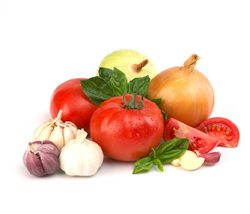from www.foodsafetysite.com
Salt may be added to vegetables and tomatoes before canning. Because its only function is flavor, it can safely be omitted. Canning fruits and vegetables without adding sugar or salt does not affect the processing time or the safety of the product.
Salt may be added to vegetables and tomatoes before canning. Because its only function is flavor, it can safely be omitted. Canning fruits and vegetables without adding sugar or salt does not affect the processing time or the safety of the product.
Vinegar vs. Salt

Acidification
To ensure safe acidity in whole, crushed, or juiced tomatoes use the following recommendations.
Acid Pint Quart Bottled lemon juice 1 Tablespoon 2 Tablespoons Citric acid 1/4 teaspoon 1/2 teaspoon Vinegar 2 Tablespoons 4 Tablespoons Add acid directly to the jars before filling with product. If desired, add up to 1 Tablespoon of sugar per quart to offset acid taste. Vinegar may cause undesirable flavor changes. The use of salt is optional in all canned tomato products. Salt is used in canning only for flavor or color protection.
To ensure safe acidity in whole, crushed, or juiced tomatoes use the following recommendations.
Acid Pint Quart Bottled lemon juice 1 Tablespoon 2 Tablespoons Citric acid 1/4 teaspoon 1/2 teaspoon Vinegar 2 Tablespoons 4 Tablespoons Add acid directly to the jars before filling with product. If desired, add up to 1 Tablespoon of sugar per quart to offset acid taste. Vinegar may cause undesirable flavor changes. The use of salt is optional in all canned tomato products. Salt is used in canning only for flavor or color protection.
Acidity in Canning

Resources for Home Preserving Tomatoes Elizabeth L. Andress, Ph.D.
National Center for Home Food Preservation
June 2010
Tomatoes can be preserved by canning, drying, freezing, or pickling. They can also be used in creating fruit spreads like jams, jellies and marmalades. Raw tomatoes or raw tomato products can be kept refrigerated (below 40 degrees Fahrenheit), but will spoil over time due to bacteria, yeasts, and molds. Preserving tomatoes in oil is currently not recommended. Oil may protect botulism organisms trapped in a water droplet. Furthermore, oil may have a deleterious effect on lid gaskets and the at least one manufacturer of home canning lids recommends against it.
Canning Tomatoes Only boiling water or pressure canning methods are recommended for canning foods. Older methods, such as oven canning and open-kettle canning, have been discredited and can be hazardous (Equipment and Methods Not Recommended from the USDA Complete Guide to Canning 1994). The risk of botulism poisoning determines the choice of either boiling water or pressure canners for canning foods. In foods that are acid (pH 4.6 or lower) the microorganism that causes botulism cannot grow. Therefore it is safe to use a boiling water bath canner. All other foods must be canned using tested pressure canning processes (Ensuring Safe Canned Foods).
Tomatoes for many years were considered high acid. However, new varieties, over-mature fruits, and tomatoes from dead or frost-killed vines may have a pH greater than 4.6. The USDA and University-based researchers have determined that to ensure a safe acid level for boiling water canning of whole, crushed, or juiced tomatoes, add 2 tablespoons of bottled lemon juice or ½ teaspoon of citric acid per quart of tomatoes. For pints, use 1 tablespoon of bottled lemon juice or ¼ teaspoon of citric acid. Acid can be added directly to the jars before filling the jars with product. Add sugar to offset acid taste, if desired. Four tablespoons of 5-percent-acidity vinegar per quart may be used instead of lemon juice or citric acid. However, vinegar may cause undesirable flavor changes. (Canning Tomatoes, Introduction). Here are some tested recipes from USDA and Cooperative Extension Service sources:
Drying Tomatoes Tomatoes are an excellent food to dry. They do not need blanching and are dried to a crisp. For more details please consult this Colorado State University Cooperative Extension Service publication: http://www.uga.edu/nchfp/how/dry/csu_dry_vegetables.pdf
Pickling Tomatoes The safety concerns of pickled tomatoes are the same as those for canning tomatoes. A pH below 4.6 must be achieved before a food can be safely boiling water canner. When pickling, commercially prepared vinegar is typically added to achieve the necessary acidity. Do not alter vinegar, food, or water proportions in a recipe or use vinegar with unknown acidity. Use only recipes with tested proportions of ingredients. There must be a minimum, uniform level of acid throughout the mixed product to prevent the growth of botulinum bacteria. Here are some tested recipes from USDA and Cooperative Extension sources:
Document Use:
Permission is granted to reproduce these materials in whole or in part for educational purposes only (not for profit beyond the cost of reproduction. References to commercials products, services, and information is made with the understanding that no discrimination is intended and no endorsement by the University of Georgia, U.S. Department of Agriculture and supporting organizations is implied. This information is provided for the educational information and convenience of the reader.
National Center for Home Food Preservation
June 2010
Tomatoes can be preserved by canning, drying, freezing, or pickling. They can also be used in creating fruit spreads like jams, jellies and marmalades. Raw tomatoes or raw tomato products can be kept refrigerated (below 40 degrees Fahrenheit), but will spoil over time due to bacteria, yeasts, and molds. Preserving tomatoes in oil is currently not recommended. Oil may protect botulism organisms trapped in a water droplet. Furthermore, oil may have a deleterious effect on lid gaskets and the at least one manufacturer of home canning lids recommends against it.
Canning Tomatoes Only boiling water or pressure canning methods are recommended for canning foods. Older methods, such as oven canning and open-kettle canning, have been discredited and can be hazardous (Equipment and Methods Not Recommended from the USDA Complete Guide to Canning 1994). The risk of botulism poisoning determines the choice of either boiling water or pressure canners for canning foods. In foods that are acid (pH 4.6 or lower) the microorganism that causes botulism cannot grow. Therefore it is safe to use a boiling water bath canner. All other foods must be canned using tested pressure canning processes (Ensuring Safe Canned Foods).
Tomatoes for many years were considered high acid. However, new varieties, over-mature fruits, and tomatoes from dead or frost-killed vines may have a pH greater than 4.6. The USDA and University-based researchers have determined that to ensure a safe acid level for boiling water canning of whole, crushed, or juiced tomatoes, add 2 tablespoons of bottled lemon juice or ½ teaspoon of citric acid per quart of tomatoes. For pints, use 1 tablespoon of bottled lemon juice or ¼ teaspoon of citric acid. Acid can be added directly to the jars before filling the jars with product. Add sugar to offset acid taste, if desired. Four tablespoons of 5-percent-acidity vinegar per quart may be used instead of lemon juice or citric acid. However, vinegar may cause undesirable flavor changes. (Canning Tomatoes, Introduction). Here are some tested recipes from USDA and Cooperative Extension Service sources:
- Tomato Juice
- Tomato and Vegetable Juice Blend
- Crushed Tomatoes (with no added liquid)
- Standard Tomato Sauce
- Whole or Halved Tomatoes (packed in water)
- Whole or Halved Tomatoes (packed in tomato juice)
- Whole or Halved Tomatoes (packed raw without added liquid)
- Tomatoes with Okra or Zucchini
- Spaghetti Sauce without Meat
- Spaghetti Sauce with Meat
- Mexican Tomato Sauce Spanish
- Tomato Paste
- Tomato Ketchup
- Country Western Ketchup
- Blender Ketchup
- Chile Salsa (Hot Tomato-Pepper Sauce) Spanish
- The USDA Complete Guide to Canning (1994), Guide No. 3, contains all of the recipes above plus Tomatillo Green Salsa, Tomato-Green Chile Salsa, Tomato Salsa, Tomato Taco Sauce, Tomato-Tomato Paste Salsa, and Chile Salsa recipes that can be found on pages 3-17 to 3-23 here: http://www.uga.edu/nchfp/publications/usda/utah_can_guide_03.pdf
Drying Tomatoes Tomatoes are an excellent food to dry. They do not need blanching and are dried to a crisp. For more details please consult this Colorado State University Cooperative Extension Service publication: http://www.uga.edu/nchfp/how/dry/csu_dry_vegetables.pdf
Pickling Tomatoes The safety concerns of pickled tomatoes are the same as those for canning tomatoes. A pH below 4.6 must be achieved before a food can be safely boiling water canner. When pickling, commercially prepared vinegar is typically added to achieve the necessary acidity. Do not alter vinegar, food, or water proportions in a recipe or use vinegar with unknown acidity. Use only recipes with tested proportions of ingredients. There must be a minimum, uniform level of acid throughout the mixed product to prevent the growth of botulinum bacteria. Here are some tested recipes from USDA and Cooperative Extension sources:
- Pickled Sweet Green Tomatoes
- Pickled Green Tomato Relish
- Tangy Tomatillo Relish
- Piccalilli
- Spiced Green Tomatoes
- Kosher Style Dill Green Tomato Pickles
- Oscar Relish
- Rummage Relish
- Spiced Tomato Jam (With powdered pectin)
- Tomato Marmalade
Document Use:
Permission is granted to reproduce these materials in whole or in part for educational purposes only (not for profit beyond the cost of reproduction. References to commercials products, services, and information is made with the understanding that no discrimination is intended and no endorsement by the University of Georgia, U.S. Department of Agriculture and supporting organizations is implied. This information is provided for the educational information and convenience of the reader.